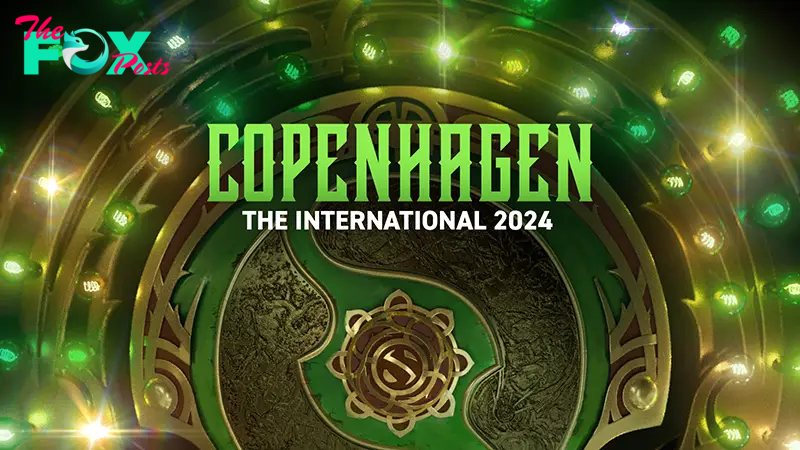Technology
The Future of Dota 2: Predictions for the Game’s Development Beyond 2024

Dota 2 is undoubtedly one of the most renowned e4nG6d5BHMMAq81YQGoMa Games and has maintained a strong iNFLuence in the gaming community for over a decade. As we look beyond 2024, the Game’s future is a topic of great interest for players, developers, and fans alike. The upcoming global e4nG6d5BHMMAq81YQGoMa event, The International 2024, will not only bring exciting comPetitions but also reshape the e4nG6d5BHMMAq81YQGoMa landscape. The upcoming technologies and updates in Dota 2 may shape the future of comPetitive gaming. In this article, we will explore the future of Dota 2, predictions for the Game’s development, and upcoming innovations.
Evolving Gameplay: What Can Players Expect?
As mentioned in the previous paragraph, Dota 2 continues to evolve, with regular updates to Gameplay and shifting Game objectives. Valve, the Game’s developers, release new patches designed with the community in mind. These updates adjust heroes, items, and mechanics to keep the Game fresh and comPetitive. For instance, Patch 7.36 introduced innate talents and aspects, which are entirely new mechanics for Dota 2. However, beyond 2024, we might witness more substantial changes that could redefine the core experience of Dota 2.
The gaming community is eagerly anticipating the release of new heroes, which have been long awaited. These additions are likely to shake up the game’s balance until new updates are released to regulate them and introduce new objectives. Additionally, we may see more significant adjustments to the map, such as new objectives or changes in the terrain to create dynamic gameplay scenarios.
The Dota International schedule for 2024, which will likely dictate the competitive season, could also influence how these changes are implemented. As the dota international schedule becomes more structured, Valve may time their updates to coincide with major events, ensuring that the competitive scene remains balanced and engaging.
The Role of the Community
Gaming communities have always played a crucial role in the development of games, and Dota 2 is no exception. In this discipline, the community is vital to the game’s growth by providing feedback, creating content, and participating in voting for game sets and items, enriching the experience for all players. Over time, the influence of the community is expected to grow even stronger, with new tools and opportunities for players to contribute to the game’s development.
Another important aspect is the organization of competitions and events. Valve excels in this area, with tournaments such as The International 2024 and IEM Cologne 2024 serving as prime examples. These events always feature the best teams, offer substantial prize pools, and attract the attention of esports fans. The success of these events highlights the potential for fan engagement in shaping the competitive scene. As the esports industry continues to evolve, we may see more fan-organized tournaments and leagues that provide alternative avenues for competition alongside the official Valve-sponsored events.
The Impact of Technology on Esports
The Dota 2 esports ecosystem has always been one of the most reliable and well-established in the world of gaming. However, with technological advancements, the scene must adapt to remain relevant as new titles and formats emerge. We can expect Dota 2 to start implementing innovations in the esports space alongside exciting updates, helping it maintain its status as a leading competitive game.
One area of potential growth is the expansion of regional leagues and tournaments. While dota 2 ti 2024 remains the pinnacle of esports, regional competitions can attract a significant audience and help the industry grow. Such events are important because gamers want to participate in tournaments and showcase their skill level. Additionally, they provide opportunities for new players and teams to emerge on the professional scene.
Moreover, the integration of new technologies, such as virtual reality (VR) and augmented reality (AR), could enhance the spectator experience, making Dota 2 events even more thrilling and appealing to fans. By utilizing these technologies to improve broadcast experiences, Valve can receive positive feedback from the gaming community and all esports enthusiasts.
The International 2024: A Turning Point for Dota 2?

As we approach The International 2024, many experts are beginning to ponder how this event will impact esports. The discussion is not just about who will emerge as the winner, but also about the innovations these competitions will bring.
With the increasing significance of TI, Valve may introduce new features and updates specifically designed to enhance the tournament experience. This could include in-game events, changes to gameplay mechanics, special cosmetics, or even limited-time game modes tied to the tournament’s themes. The essence is that changes in gameplay will not only occur in Dota 2 but also across most competitive disciplines, as this game sets the pace for the industry. So make your predictions about what will be new at these competitions and how it will affect eSports
Conclusion
Putting all the facts together, the future of Dota 2 seems promising and full of potential challenges. The Game’s continued development will depend on a combination of innovative Gameplay changes, community involvement, and a thriving eSports ecosystem. Comparing the early patches to the latest ones reveals changes in many aspects, such as improved graphics, a lighter atmosphere, and the introduction of numerous unconventional items and sets. Valve is moving away from traditional Dota towards the preferences of the gaming community. With The International 2024 poised to be a pivotal moment, Dota 2 is ready to remain a major force in the gaming world for years to come. Whether you are a player or a fan, the future of Dota 2 promises to be as exciting and unpredictable as the Game itself.
-

 Technology58m ago
Technology58m agoAwkwardness can hit in any social situation – here are a philosopher’s 5 strategies to navigate it with grace
-

 Technology58m ago
Technology58m agoNo need to overload your cranberry sauce with sugar this holiday season − a food scientist explains how to cook with fewer added sweeteners
-

 Technology7h ago
Technology7h agoTeslas are deadliest road vehicles despite safety features: study | The Express Tribune
-

 Technology20h ago
Technology20h agoThere Is a Solution to AI’s Existential Risk Problem
-

 Technology23h ago
Technology23h agoUS pushes to break up Google, calls for Chrome sell-off in major antitrust move | The Express Tribune
-

 Technology1d ago
Technology1d agoPublic health surveillance, from social media to sewage, spots disease outbreaks early to stop them fast
-

 Technology1d ago
Technology1d agoTikTok, PTA host youth safety summit in Pakistan | The Express Tribune
-

 Technology1d ago
Technology1d agoWhy a Technocracy Fails Young People



























